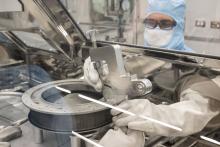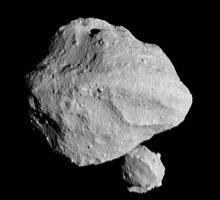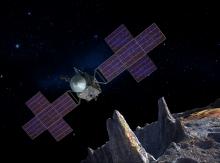Listen to today's episode of StarDate on the web the same day it airs in high-quality streaming audio without any extra ads or announcements. Choose a $8 one-month pass, or listen every day for a year for just $30.
You are here
Sweeping Up
Canterbury Cathedral is one of the most historic buildings in England. That history isn’t limited to assassination, civil war, and famous novels. It preserves some of the history of the solar system as well.
And scientists are literally vacuuming it up. They’re scouring the roof of Canterbury and other cathedrals for bits of space dust.
Most of the bits are pieces of asteroids — large rocks that orbit the Sun. Collisions between them create clouds of dust. Thousands of tons of the dust grains fall to Earth every year.
They’re hard to find, though, because they’re mixed with all the dust produced here on Earth. So researchers from the University of Kent decided to look on cathedral roofs. There’s a lot of area to search, the roofs are seldom touched, and the cathedrals maintain good records of construction and maintenance.
The scientists vacuum up the dust. They use several techniques to sift through it to find the bits from space. In particular, they look for tiny spheres that melted then resolidified as they plunged through the atmosphere. Some of them contain magnetic minerals, and they show signs of exposure to radiation.
Some of the grains contain water and organic compounds — the building blocks of life. Asteroids may have supplied Earth’s original water and organics. So studying these bits of space dust can help scientists learn more about Earth’s ancient history — long before England’s great cathedrals.
Script by Damond Benningfield





